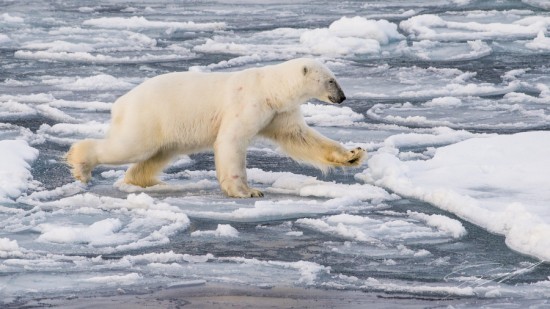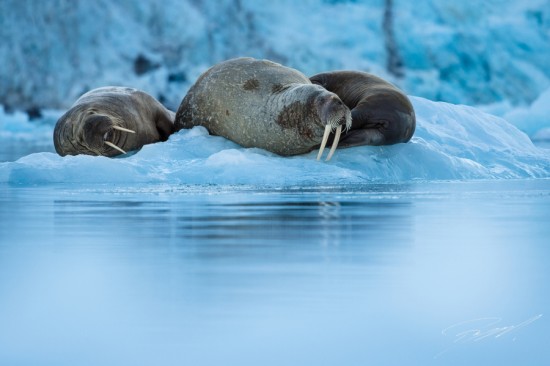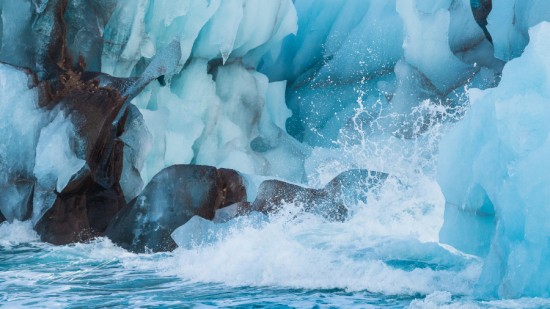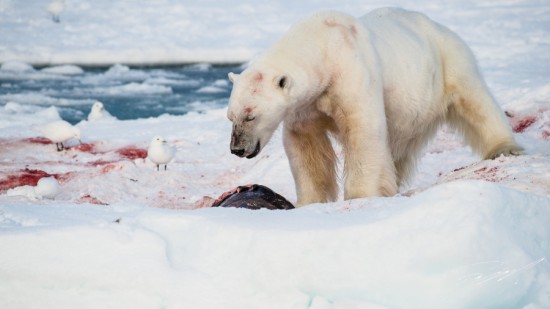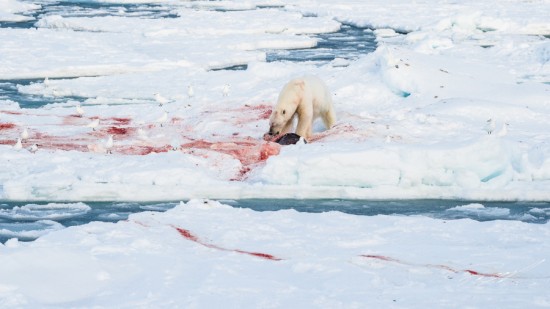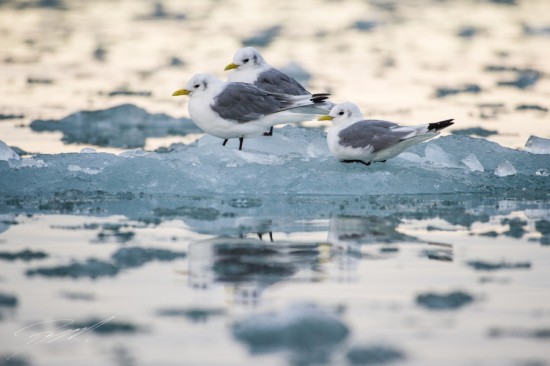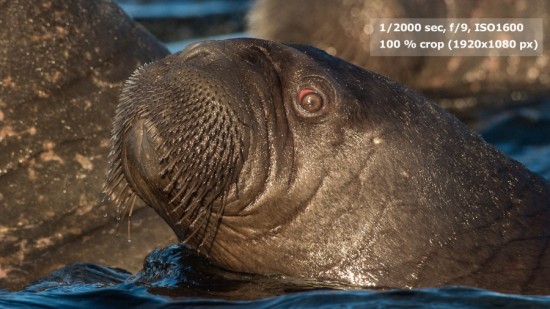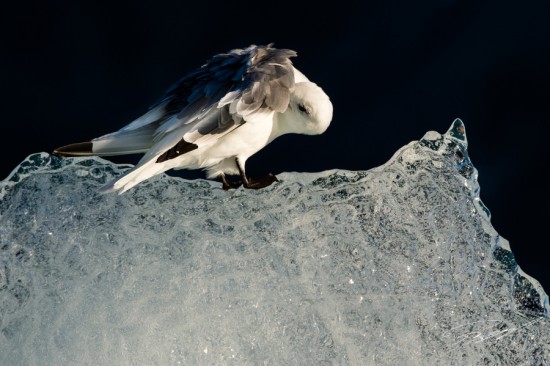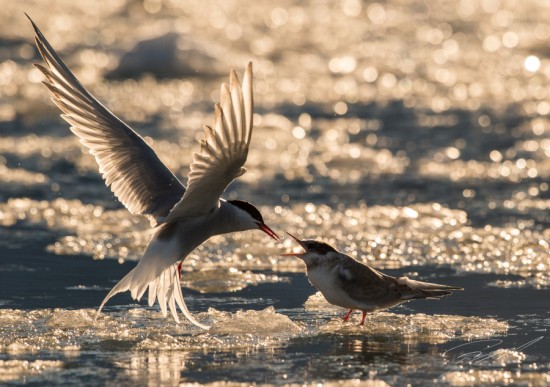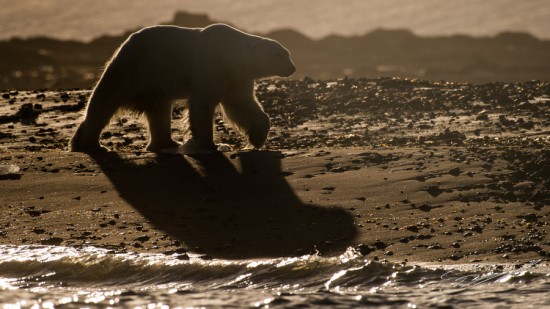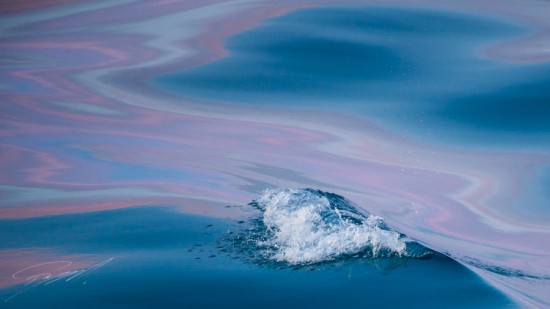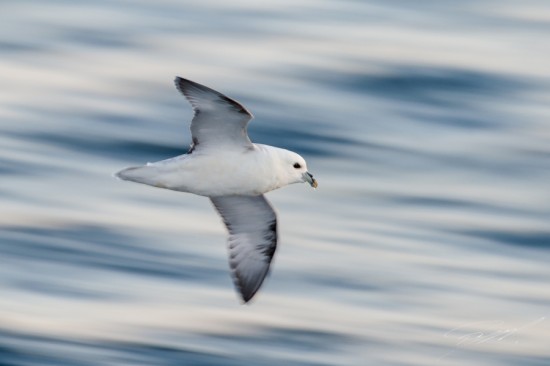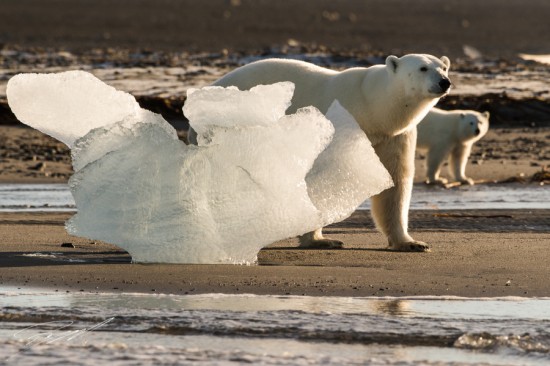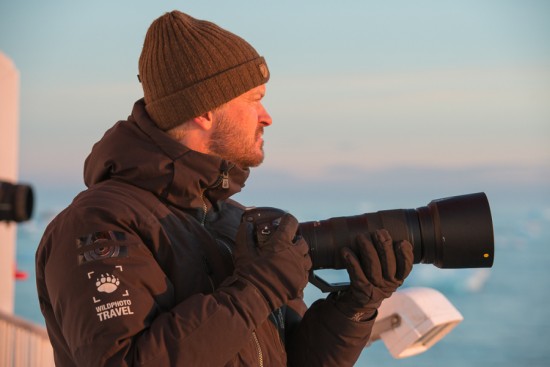
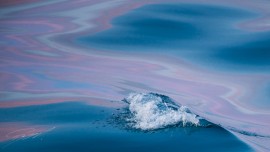
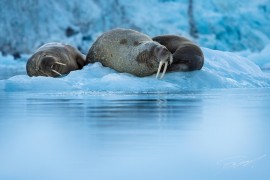
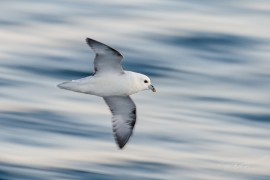
This field test report on the new Nikon 200-500mm f/5.6E ED VR lens is by Roy Mangersnes (Facebook | Twitter | Instagram, click on images for larger view):
Due to efficient logistics and a good friend I was lucky to receive the new Nikkor 200-500mm f/5,6 lens a couple of days after I arrived in the Arctic. The next morning, September 14th, I embarked on a 10 days photographic expedition around the Svalbard archipelago. Like many times before I was hosting photographers from around the world to this magical destination on top of the world for our travel company WildPhoto Travel. I was really looking forward to using the new lens in these conditions and my expectations were very high. I realize the 200-500mm lens is not competing in the same league as my preferred long lens, the 400mm 2,8, or other high-end lenses from Nikon, but I was expecting it to perform just as good as the competing brands with equivalent zoom ranges.
The entire test was done using the 200-500mm lens together with the Nikon D4s handheld.
SPECS
According to the official Nikon website “the AF-S NIKKOR 200-500mm f/5.6E ED VR is a 2.5x super-telephoto zoom lens that supports the 200-500 mm range of focal lengths with a maximum aperture of f/5.6. Adoption of ED glass elements achieves superior optical performance with which chromatic aberration is suppressed.
In addition, the lens is equipped with a vibration reduction (VR) function that exhibits the highest level of camera shake compensation available with a NIKKOR lens—equivalent to a 4.5-stop increase in shutter speed”
So how does it work in the field?
FIRST IMPRESSION
At first I was taken by the size of the lens. Obviously being a 5,6 aperture lens it was rather compact and light weight (2,09kg). Still it feels like a really solid built lens. I am usually a bit worried about zoom lenses with external zoom as they have a tendency to suck in dust and moisture. I did however not experience any of this even though I was shooting in moist weather and temperatures fluctuating around zero degrees, producing a lot of condensation. I have previously been surprised by the Nikkor 28-300 f/3,5-5,6 lens, and how it could withstand fine sand from the Kalahari and also moisture in the Bolivian rainforest. The 200-500mm seem to have been constructed in a similar way.
The lens feels a little heavy towards the front when zooming all the way out to 500mm, even when shooting with a Nikon D4s body. However, the over all light weight of the lens makes it easy to handle and I did find the range to be very handy for the situations I encountered.
Shooting from a moving ship or a Zodiac rubber dingy it was very useful to be able to adjust the framing without the need to alter the position of the boats. Especially in situations when the subject suddenly changes behaviour and we had interaction is was great to be able to get a wider frame and include the action or the landscape.
OPTICAL QUALITY
Obviously the optical quality of the lens is extremely important and it was the first thing I wanted to test. If the lens did not perform to my expectations I would most likely not use it in many situations during the trip, as I would have hated to miss shots because of bad optics. I was happy to see that the lens was very sharp throughout the range. As a matter of fact I could not see any difference in the sharpness though the zoom range. During the next 10 days I would shoot roughly 2000 frames with the lens, capturing subjects like Polar bear, Walrus, Arctic birds, icebergs and landscapes. I had no second thoughts about choosing the 200-500 as my preferred lens in most situations.
I was also very happy to see that the lens preformed well in the whole focal range available. Many zoom lenses struggle at the extremes, but I could not see any changes when shooting at 500 or 200 compared to other focal lengths.
The only situations I turned to my 400mm f/2,8 was when shooting backlit subjects or in low light. Obviously the extra stops gained with an f/2,8 lens did come in handy when the light was low. When it came to backlight, the lens handled most situations well, but with a lot of ice and reflections I did experience some flare that I usually don’t see in my prime lenses with nano-coating.
However, it is worth noting that the 200-500mm does handle harsh light very well and I did get very little chromatic aberration, if any at all. This is very impressive considering the pricing and built of this lens.
FOCUSING
The 200-500mm is not your typical action photography lens with an aperture of 5,6, but for most of the stuff I was shooting on this trip it worked quit well. Most of the time I find myself stopping down to 5,6 and 8 when shooting wildlife anyway, and with the ISO capabilities of the cameras today I have no problem with a 5,6 lens for action.
There was however a tendency for the lens to perform slower in low light and I struggled to follow the birds after the sun had set, especially when they were flying over the ocean surface. Not an easy autofocus situation for any lens, but my experience with the 400 f/2,8, and other prime lenses, is that it should be possible. Group-AF was used for all the action shots. That being said, in “normal” light situations the lens performed very well and I was able to produce some images I did not expect to get with this kind of zoom lens.
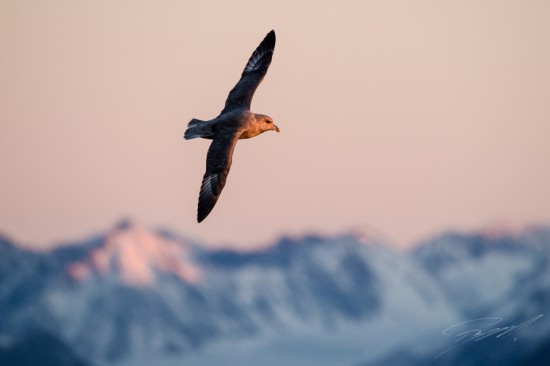
Northern Fulmar against the Spitsbergen mountains in evening light – Nikon D4s, 200-500mm @ 500mm, 1/640sec, f/7,1 and ISO 1250
During the trip I was shooting a lot of backlit wildlife and I was surprised by the performance of the focus in these situations. The Group AF mode was following the subject with ease and the sharpness was beyond expectation.
The VR was also impressive and as I was shooting everything handheld, or resting on a moving Zodiac I was really testing the VR to the limit. Even in a moving Zodiac I was able to produce sharp images with the lens at 500mm and a shutter speed of only 1/200 second. That is very impressive!
I left the VR on most of the time, except when panning at 1/40 sec or slower. I was not able to conclude on how the VR works while panning, but I did experience some ghosting when it was active at this speed and slower. This usually also appears when shooting with prime lenses.
CONCLUSION – GOOD AND BAD
To conclude I can say I would be happy to have this lens in my bag, and I find it extremely handy for many situations. When shooting from a fixed position like a safari vehicle or a hide the zoom is perfect. I also find the range from 200mm to 500mm sufficient for this kind of lens. I have requested this for some time, actually since Canon released the 200-400mm with built in 1,4 extender. I couldn’t see why they didn’t just produce a 200-560mm for that matter and make it a 5,6. Now it seems Nikon have followed my thoughts and produced a great zoom lens at a great price!
+ : Light weight, solid built, handy range, super sharp, precise focus, impressive VR and good price.
– : Slightly off balance at 500mm, flare when shooting backlight and a little slow in low light.
I will recommend this lens to many!
Thanks to Nikon Norway for lending me the lens on our expedition to the Arctic.
This post first originated here and is published with permission. If you have an interesting idea for a guest post, you can contact me here.
